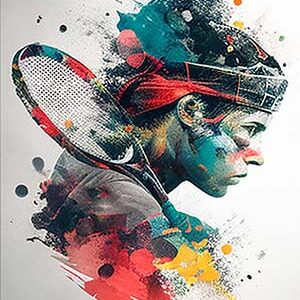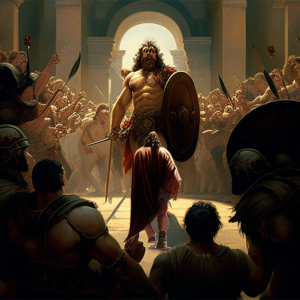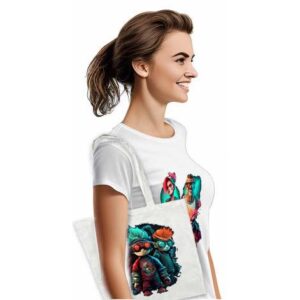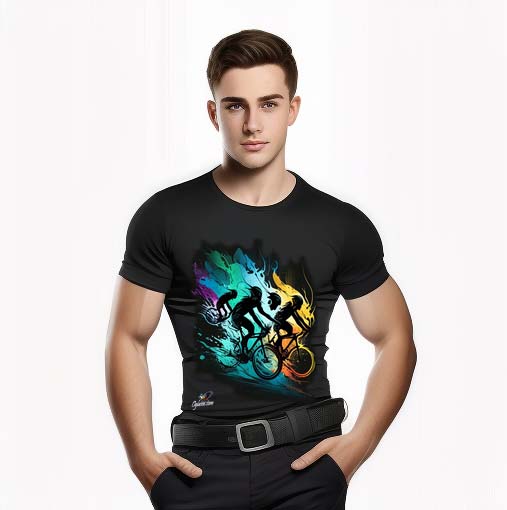





























AI technology has revolutionized various industries, including the fashion industry. One area where AI has made a significant impact is T-shirt design. With the ability to generate unique and creative designs, AI has opened up new possibilities for designers and consumers alike. However, with this newfound power comes a responsibility to consider and address the ethical implications. This article will explore the ethical considerations in AI T-shirt design and discuss how to balance creativity and control.
The Rise of AI in T-Shirt Design
AI technology has transformed the process of T-shirt design. With AI algorithms, designers can generate plans based on specific criteria and preferences. These algorithms analyze patterns, color palettes, and design elements to create visually appealing and unique T-shirt designs. This level of automation and customization has revolutionized the fashion industry, making it easier for designers to create personalized products for their customers.
The Impact of AI on Creativity
While AI has enhanced the creative process in T-shirt design, it has also raised concerns about the role of human creativity. Some argue that AI-generated plans need more emotional connection and the personal touch that human designers bring to their work. There is a fear that AI may replace human designers entirely, leading to a loss of artistic expression and creative innovation.
However, it is important to recognize that AI is a tool that can augment human creativity rather than replace it. AI algorithms can assist designers in exploring new design possibilities, providing inspiration, and generating design options that may have yet to be considered. By embracing AI as a creative partner, designers can leverage its capabilities to enhance their artistic vision and create unique and innovative T-shirt designs.
Ethical Considerations in AI T-Shirt Design
Addressing ethical considerations is crucial with the increasing use of AI in T-shirt design. Here are some key aspects to consider:
Data Privacy and Security
AI T-shirt design algorithms rely on large datasets to generate designs. These datasets often include personal information and preferences of customers. It is essential to handle this data carefully and ensure that it is collected and stored securely. Designers should follow best practices for data privacy and implement robust security measures to protect customer information.
Algorithm Bias and Fairness
AI algorithms are trained on existing datasets, which may contain biases and prejudices. This can result in AI-generated designs that perpetuate stereotypes or exclude certain groups of people. Designers must carefully curate and diversify their training datasets to avoid algorithmic bias. Regular audits should be conducted to identify and correct any preferences in the AI design process.
Intellectual Property Rights
AI-generated designs raise questions about intellectual property rights. Who owns the rights to a design created by an AI algorithm? Designers should clearly define ownership and copyright policies to protect their work and the work of AI algorithms. Collaboration between human designers and AI systems should be governed by clear agreements to ensure fair attribution and intellectual property protection.
Transparency and Explainability
AI algorithms can be complex and challenging to understand. Designers should strive for transparency and explainability in the AI design process. Customers should be informed that AI algorithms were used to create their T-shirt designs and explain how the algorithm works. This transparency builds trust and allows customers to make informed purchase decisions.
Human Oversight and Control
While AI can generate impressive designs, it is crucial to maintain human oversight and control. Designers should review and approve AI-generated plans before they are finalized and produced. This ensures the methods align with the designer’s artistic vision and meet the desired quality standards. The human intervention also allows for adjustments and modifications based on context and customer feedback.
Balancing Creativity and Control
The right balance between creativity and control is essential in AI T-shirt design. Here are some strategies to achieve this balance:
Collaboration between AI and Human Designers
AI should be seen as a tool that complements human creativity rather than a replacement. Designers can collaborate with AI algorithms to explore and inspire new design possibilities. By working together, human designers and AI can create innovative and unique T-shirt designs that blend the best of both worlds.
Iterative Design Process
Designers should adopt an iterative design process that involves continuous feedback and refinement. This allows for experimentation and exploration while maintaining control over the final output. By incorporating feedback from customers and stakeholders, designers can ensure that AI-generated designs align with their vision and meet the needs and preferences of their target audience.
Ethical Guidelines and Policies
Designers should establish ethical guidelines and policies for using AI in T-shirt design. These guidelines should address data privacy, algorithm bias, intellectual property rights, transparency, and human oversight. By adhering to these guidelines, designers can navigate the ethical considerations associated with AI and ensure responsible and ethical design practices.
Conclusion
AI has transformed T-shirt design, offering new possibilities for creativity and customization. However, ethical considerations must be addressed to ensure responsible and fair design practices. Designers should embrace AI as a creative partner, leveraging its capabilities while maintaining human control and oversight. By adopting ethical guidelines and policies, designers can balance creativity and power, creating innovative and unique T-shirt designs that resonate with their audience.
Frequently Asked Questions (FAQ)
Q1: Can AI completely replace human designers in T-shirt design? A1: No, AI should be seen as a tool that augments human creativity rather than a replacement. Human designers bring a unique emotional connection and personal touch to their work that AI algorithms cannot replicate.
Q2: How can designers address algorithm bias in AI-generated designs? A2: Designers should carefully curate and diversify their training datasets to avoid algorithmic bias. Regular audits should be conducted to identify and correct any preferences in the AI design process.
Q3: Who owns the rights to designs created by AI algorithms? A3: Ownership and copyright policies should be clearly defined by designers to protect their work and the work of AI algorithms. Collaboration between human designers and AI systems should be governed by clear agreements to ensure fair attribution and intellectual property protection.
Q4: How can designers ensure transparency in the AI design process? A4: Designers should inform customers that AI algorithms were used in creating their T-shirt designs and explain how the algorithm works. This transparency builds trust and allows customers to make informed purchase decisions.
Q5: What is the role of human oversight in AI T-shirt design? A5: Human designers should review and approve AI-generated plans before being finalized and produced. This ensures the methods align with the designer’s artistic vision and meet the desired quality standards. The human intervention also allows for adjustments and modifications based on context and customer feedback.
Testimonials
| Ethical Considerations in AI T-Shirt Design: Balancing Creativity and Control |
| 1. Introduction |
| 2. The Rise of AI in T-Shirt Design |
| 3. The Impact of AI on Creativity |
| 4. Ethical Considerations in AI T-Shirt Design |
| 4.1 Data Privacy and Security |
| 4.2 Algorithm Bias and Fairness |
| 4.3 Intellectual Property Rights |
| 4.4 Transparency and Explainability |
| 4.5 Human Oversight and Control |
| 5. Balancing Creativity and Control |
| 5.1 Collaboration between AI and Human Designers |
| 5.2 Iterative Design Process |
| 5.3 Ethical Guidelines and Policies |
| 6. Conclusion |
| Frequently Asked Questions (FAQ) |
| Testimonials |
For more information and to explore a wide range of T-shirt designs, visit Oglasee.